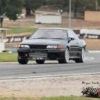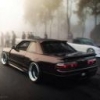Kando Dynamics Turbo
Announcements
-
Similar Content
-
Latest Posts
-
By pacman_1219 · Posted
Not sure what you mean by electronic speedo drive. Speedo reads fine up to 180 yes. -
For anyone interested, this is my old graph from 2021, but I've plotted the previous setup curve onto it with a black pen. old setup was: pon cams, oem itbs and plenum, HPI manifold, hks 2835 pro S .87ar rear, Turbosmart actuator, 3" turbo back no res. or cat., greddy spec M fmic, nismo 740cc inj, walbro in tank 460, splitfires, 4" intake pipe, Apexi pod, e85, eboost2, power Fc. I love that the new setup has much larger turbo spec with the HTA3076 1.01ar Ts rear, and literally everything is bigger, but far higher quality and result is it's FAR more responsive in paper.
-
This makes a lot of sense! I just had that realisation a few minutes ago and wrote it above haha. This is a good new discovery. "Sanding the side of the hill" perfect way to put it. 😂 😂
-
This is probably what's happened to me. I'll put filler again on my repairs and use the long block and let you know how I go. Fingers crossed it's my last batch of filler lol. I can see that happening where my block dipped at certain points because it didn't cover all the high spots at the same time if that makes sense. I'm just trying to visualise the fact that with the large sanding block I will be sanding far away from the central dent area and whether that will cause issues or whether that's going to fether out my repairs better.
-







Recommended Posts
Create an account or sign in to comment
You need to be a member in order to leave a comment
Create an account
Sign up for a new account in our community. It's easy!
Register a new accountSign in
Already have an account? Sign in here.
Sign In Now